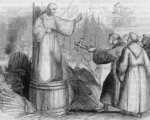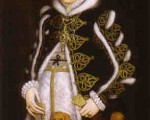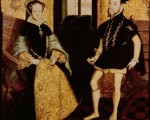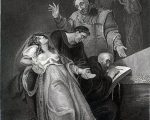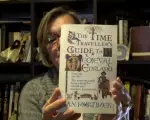Happy May Day! Today, 1st May, is May Day, a special day in Tudor England. Today, in the UK, the May Day holiday is the first Monday in May so today is a normal working day, what a shame. Here in Spain, it is a bank holiday, but is the “Day of the Worker” and just time to relax, rather than to do anything special.
In the Tudor period, 1st May was was seen as the first day of summer. May Day had its roots in ancient celebrations of fertility and was celebrated with special processions, plays and pantomimes, pageants, Morris dancing and the crowning of a May Queen. There would also be a Maypole, a tall wooden pole decorated with greenery and flowers and hung with ribbons. People would hold the ribbons and dance around the Maypole weaving the ribbons together in patterns.
[Read More...]






